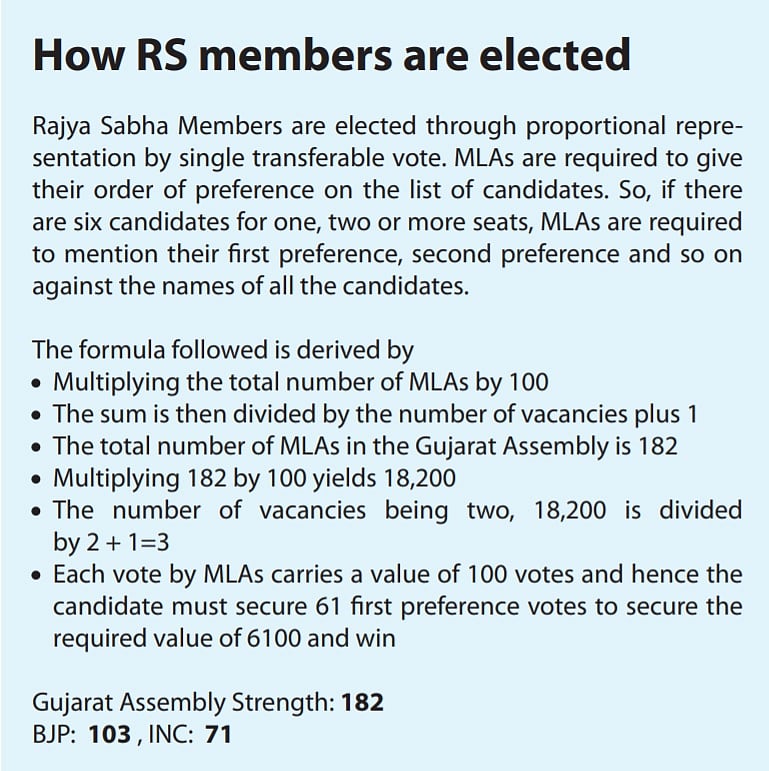Explainer on election to fill Rajya Sabha seats: Regular vs casual vacancies
The Election Commission claims it has been filling up casual vacancies through separate elections and regular vacancies from a state through one election. Can it follow two different procedures ?

The controversy over the Election Commission’s decision to fill up vacancies in the Rajya Sabha caused by election of Amit Shah and Smriti Irani to the Lok Sabha has taken an interesting turn. The Supreme Court has agreed to hear the petition challenging the decision on June 25 and served notice to the Election Commission to respond by June 24.
The Election Commission claims it is well within the law to conduct separate elections on the same day to fill up ‘casual’ vacancies from Gujarat in the Rajya Sabha.
The heart of the matter is whether the Election Commission is allowed to follow two different procedures to fill up ‘Regular’ vacancies and ‘Casual’ vacancies. And what are regular vacancies and which vacancy is to be deemed casual. A third question raised is whether the EC can arbitrarily decide on the distinction.
The other issue to be decided by the court is whether the EC’s order flies in the face of the principle of ‘Proportional Representation’ by ‘Single Transferable Vote’.
In 2017, before the Assembly elections were held in Gujarat in December that year, three vacancies from Gujarat in the Rajya Sabha were filled up. There was then just one election and each MLA cast one vote to elect three candidates. Because they were required to indicate their first, second and third preference for the candidates put up by different political parties.
In this process, surplus votes get transferred to the next candidate of preference.
Cross-voting also takes place. And with the BJP in 2017 poaching several Congress MLAs, the rest of the MLAs were flown to the outskirts of Bengaluru and confined till the election so as to prevent further poaching by the BJP. Congress candidate Ahmed Patel had then won the third Rajya Sabha seat from Gujarat. But if separate elections had been held in 2017, with MLAs casting three votes in place of one, the BJP would have won all the three seats. There would have been no need of poaching.
In 2019 too, with the BJP having 100 MLAs in the 182-member House, if separate elections are held as decided by the EC, the BJP will regain both the seats because support of only 61 MLAs is required to win a seat.
But if the election is held together, and MLAs cast just one vote, BJP would easily get 61 first preference votes for getting one of its candidates elected. But it will then be left with just 39 remaining first preference votes, which will not be enough to get the second candidate elected. It would then have to ensure cross-voting by 22 MLAs from other parties to make up the deficit.
The Election Commission is arguing that since Amit Shah and Smriti Irani have not completed their six-year term and because the candidates elected in their place in 2019 will be Members of the Rajya Sabha for the remaining four years, these are ‘casual’ vacancies, which have always been filled up through separate elections since 1984.
Dhanani has petitioned the Supreme Court challenging this order and has argued that the single transferable vote is meant to give an equal chance to parties with fewer MLAs to get a seat in the RS for their nominee.

Follow us on: Facebook, Twitter, Google News, Instagram
Join our official telegram channel (@nationalherald) and stay updated with the latest headlines
Published: 21 Jun 2019, 11:00 AM
